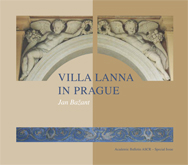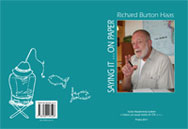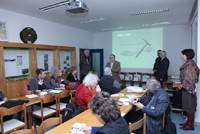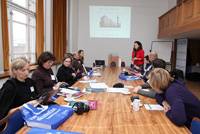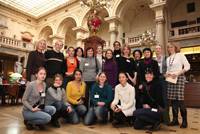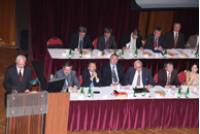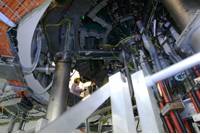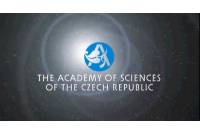
1 . How did the idea for the information portal come into existence and where do the financial resources come from?
Today, CORDIS has evolved into an interactive web portal that links key stakeholders in research and development across Europe and beyond. It is the official source of information for participation in EU research programmes. Thanks to CORDIS, researchers and companies interested in being involved in EU-funded research have timely and equal access to information, whether they are based in Europe or elsewhere. This explains why with the launch of every new framework programme, the number of pages viewed have doubled or even more. For example, when the Seventh Framework Programme (FP7) announced its first calls in 2007, the number of pages on CORDIS viewed that year exceeded 73 million.
Since the launch of FP7, the Official Journal of the EU no longer publishes the full set of information on calls for proposals, which are the basis for the distribution of the EU research budget. It only announces the calls and indicates CORDIS as the source for all official documents. CORDIS offers direct access to the electronic facilities for the preparation and submission of project proposals online. The service has always been financed by the budget of the successive framework programmes; currently it is FP7.
CORDIS is managed by the Publications Office of the EU. All the enhancements to the services offered are validated by a management board where our stakeholders from the various General Directorates from the European Commission involved in research are represented.
2. What is the target audience and the targeted countries? Are the third countries also involved?CORDIS has a dedicated area ("Go local") for information on the national policies and research programmes of the EU’s Member States, candidate countries, associated countries and countries with science and technology cooperation agreements with the EU. The service also brings the latest news on research-related activities and initiatives of the current presidency of the Council of the EU.
We work closely with national and regional research authorities, in addition to EU initiatives such as the European Research Area, ERAWATCH, Enterprise Europe Network, EURAXESS and more. We intend to use more and more advanced features, such as RSS feeds and web services, to ensure efficient, consistent and targeted dissemination of information.
3. Has CORDIS seen an increase in use and participation from the new Member States?
Yes, the use of CORDIS by people and organisations from the new Member States has definitely increased. Until recently, researchers and companies from the new Member States concentrated more on using information from CORDIS rather than using CORDIS to promote themselves. Now they have started to make better use of the interactive CORDIS services, such as the CORDIS Wire press platform and the Partners Service, which offer two-way information channels for European research stakeholders. Two Polish regions have now launched their own R&D information services on CORDIS to promote their potential in the European Research Area (ERA).Also, during the terms of the Slovenian and the Czech EU Presidencies, CORDIS collaborated with the national research authorities to provide dedicated services with news and advanced information on their research priorities and initiatives. This represents a unique example of partnership and collaboration between the European institutions and the states holding the EU presidencies. I believe that the interest which the Czech Presidency Service on CORDIS has attracted in the recent months of your country’s EU Presidency can be beneficial for the research community and its involvement in EU-funded research.
4. Could you explain to our readers how CORDIS can help a researcher to become more involved in European research, especially in R&D Framework Programmes?
CORDIS is designed to support potential and active participants through all stages of the Framework Programme – applying for, managing and reporting on the results from EU-funded projects.A researcher, for example, can find on CORDIS all the relevant information on all the published calls, he/she can have access to all the previous activities conducted in previous Framework Programmes such as FP4, FP5, FP6, Euratom. This includes the answers to questions such as: What were the projects? Who was involved? What are the results? Who are the contacts? This researcher will have access to all FP7 projects already signed and to others looking for collaboration through the interactive Partners Service. Using this two-way channel can help not only to find others, but also to communicate interest in getting involved, matching the needs of researchers by country or research theme.
I would also suggest that this researcher registers on CORDIS since registered users can subscribe to e-mail alerts on calls, partners, news, events and more, related to the topics of their interest. In addition to FP7, one of the most popular services on CORDIS is the News.
Following the award of an EU grant, project co-ordinators can have access to a dedicated interface to submit news, reports and other information that may be disseminated publicly throughout the life of a project. The CORDIS Wire platform provides them with the opportunity to promote themselves to CORDIS users news on project launches, events and achievements.
5. How can the service facilitate links between researchers and the business community?
The service is currently being redesigned to stimulate further exchange with technology transfer organisations and highlight success stories for science-business collaboration. It is one of the services which can be very useful for spinning out emerging Czech technologies. A selection of results is also published monthly in the Research*eu results supplement which is published on paper; subscription is free.
6. What are the new developments of CORDIS and how are you planning to mark the 20th anniversary of the service in 2010?
Ahead of its 20th anniversary, the aim is to make CORDIS even more user-friendly and better referenced by Internet search engines through the best use of state-of-the-art ICT solutions.We are now testing a new search facility. It is very user-friendly and intuitive. It will offer contextual search and allow for the first time simultaneous retrieval of content from both CORDIS and the research-related areas of the Europa portal. This means that with a single click users will be able to find all information, whether they type in scientific or public terminology. By searching, for example, for „swine flu“, they will receive the most relevant results related to Virus H1N1 and in addition they will be able to find projects, partners, news and/or results related to this topic. Registered users will be able to build personalised email alerts or even specific RSS feeds from saved search queries.
Another example is the newly launched R&D Syndicated Newsroom, which gathers news published from nearly fifty official European R&D sources in one place. It can be used as a widget on services, such as iGoogle, NetVibes, MyYahoo alongside with local weather forecasts, television schedules, international press, travel information or similar content of personal interest.
We are also working on improving the CORDIS Partners Service by adding functionalities that can be found in social networking services, such as defining a profile, bookmarking relevant information, tagging content, building clipping lists of contacts, projects or references. We have set up a working group with representatives from National Contact Points and some users who will contribute to the design and later on help us test the service before it goes live.
Such developments demonstrate that nearly two decades since it was launched, CORDIS has maintained its innovative spirit and aspires to benefit from existing/proven new ICT technologies to offer a better service to its audience.
Anna Vosečková,
CZELO
6 Oct 2009


 Česky
Česky



